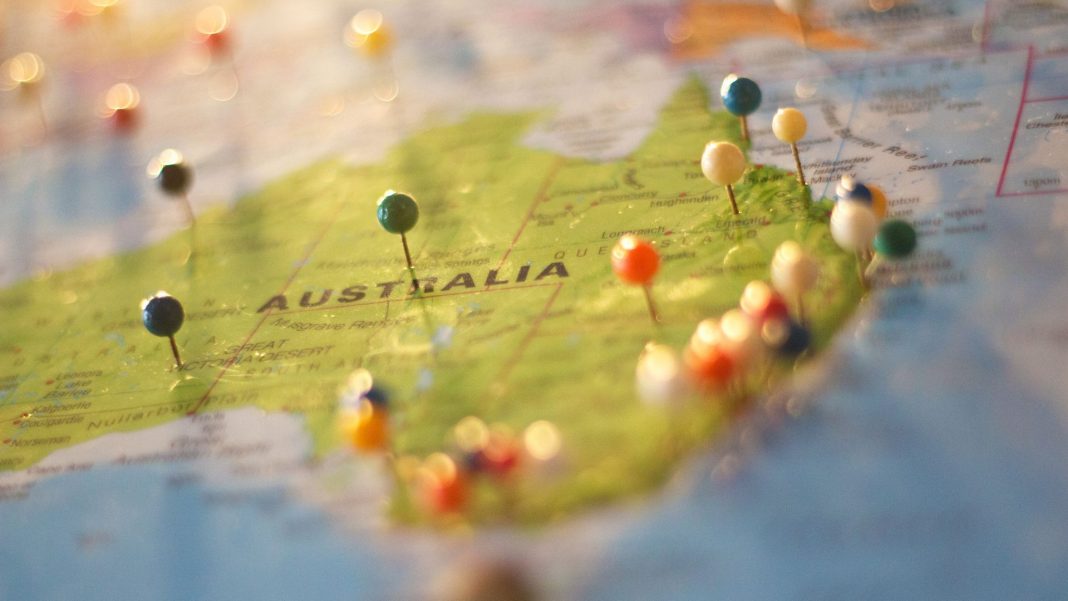The media is at it again. Moan, moan, moan. Property is too expensive, all the good properties are gone, you can’t buy a reasonably priced and well located property any more.
There was a time when I fell victim to this type of thinking. It was very early on before I purchased my first property . . I used to worry myself silly thinking I would never be able to buy anything.
But what I was doing was looking at locations and properties that were outside my budget, because those locations were the only ones I knew.
Back then, I was looking at suburbs like Haberfield (NSW), Trigg (WA), Hawthorn (VIC), Toowong (Qld). I wasted precious time because I was holding out for those types of locations, when I could have been buying in areas that eventually took off anyway . . like Concord (NSW), Fremantle (WA), Coburg (VIC), and Bulimba (Qld).
More importantly, I was holding out for a house as my first purchase . . because everyone knows houses are better than units, right? Yes . . tell that to unit owners in Balmain or Bondi, the Gold Coast, Subiaco, or Abbotsford.
Of course, when you’re buying a unit you have to check the property out carefully . .but you also need to do that with anything you buy.
If only I knew then what I know now . . It’s more important to buy when the time is right for you personally, then buy the best property that meets your budget.
The other big noise that stunted my thinking at the time was all the ‘financial experts’ screaming that you should put all your money into shares – it took me a while to figure out it was just the stock market people trying to sell me their services. But . .that’s another story.
These days, buyers have many more opportunities to buy great property with good potential at all budget levels. And there’s a broader range of avenues to use. You don’t only have to buy a ‘home’, you can rent-vest and choose from a wide variety of budgets and property types . .from student accommodation, holiday homes, small commercial properties, and residential property to name just a few.
The truth
The truth is there’s plenty of opportunities and help if you need it. Yes . you need to have savings and be earning an income, but don’t continually put off making a purchase because you think you need to pay a million or more to make it happen.
If it’s more than just money that’s stopping you – and goodness knows buying has never been more complex – then check out our new Buyer Success Program.
The Buyer Success Program has been designed to save you time, help you identify problem properties, and increase your ability to negotiate and purchase your ideal property. If you’re not buying property all the time, it’s easy to become snagged by traps in the process. The Buyer Success Program will help you avoid the traps, and skill you up so you can confidently take action. Click here for more information on this new way to buy property.
Locations for sub $500,000 purchases
If you’re wondering where you can buy property for less than $500,000, check out the summary below which was compiled by PropTrack.
PropTrack prepared a list of properties where repayments would be less than $550 per week, assuming a buyer has a 20% deposit and their loan was approved using a 6.24% interest rate. This equated to a purchase price of $447,000 or less.
According to PropTrack data, there are 340 suburbs across Australia where median house prices are below $447,000, and 261 suburbs with median unit prices in that range.
Most of the suburbs where a typical home costs less than $447,000 are outside the capitals, where cheaper property prices mean buyers get more bang for their buck. But that’s not always the case so read on for the State / Territory blow by blow.
New South Wales
There are no suburbs in Sydney where a $550 per week budget affords a house, but plenty of suburbs where buyers can purchase a unit, mostly in Sydney’s southwest.
Lakemba was the closest suburb to the CBD in that budget, with a median unit price of about $397,000, while nearby Wiley Park and Punchbowl were almost as affordable.
Further out, buyers can find units for under $447,000 in a string of suburbs between Liverpool and Parramatta, including Warwick Farm, Cabramatta, Fairfield, Guildford and Harris Park.
In regional NSW, the same budget affords a house in 55 suburbs, mostly in the Central West, New England and Riverina regions, including some suburbs of regional cities like Wagga Wagga and Albury.
Closer to the coast, West Kempsey and Casino offer houses for less than $447,000, while unit buyers will find properties within budget in Taree and Raymond Terrace.
Victoria
While a $550 a week budget won’t afford a house in Melbourne, buyers can purchase a unit with that kind of money in 18 Melbourne suburbs, mostly in the city’s west and north.
Inner suburbs like Carlton, Flemington, Travancore and West Footscray fall into that budget, as do suburbs a little further out like Broadmeadows, Bundoora, Notting Hill and Dandenong. Outer suburbs including Melton, Werribee and Craigieburn also offer units of similar value.
In the regions, buyers have many more options, including in major regional towns like Shepparton and Mildura where median house prices are under $447,000.
On the coast, units in Warrnambool and houses in Portland come in under budget, as do units in Herne Hill, a suburb of Geelong.
Queensland
In Brisbane, buyers will need to search in the city’s west in suburbs like North Booval or East Ipswich to find a house with repayments under $550 per week, or else take the ferry to Russell Island or Macleay Island to purchase a house with cheaper repayments than the national median rent.
Unit buyers will have more luck, especially in Brisbane’s south in suburbs like Acacia Ridge, Slacks Creek, Shailer Park and Loganlea, as well as in the Ipswich region. Alexandra Hills in the east and Strathpine in the north also have affordably-priced apartments for sale.
In regional Queensland, buyers have a lot more options, both on the coast and inland. Closer to Brisbane, suburbs in Toowoomba’s north such as Wilsonton Heights, Rockville and Harlaxton have affordable median house prices, as do Warwick, Stanthorpe, Kingaroy and Maryborough.
Further north, plenty of suburbs in Bundaberg, Gladstone, Rockhampton and Mackay have both houses and units that can be afforded for less than $550 per week in repayments.
Further north, a median-priced house costs less than $447,000 in almost every Townsville suburb, while most Cairns suburbs have median unit prices less than $400,000, pushing repayments below the $500 per week mark.
South Australia
All the Adelaide suburbs with a median house price below $447,000 are in the city’s north.
Suburbs like Davoren Park, Smithfield Plains and Elizabeth Downs have attracted budget-conscious buyers from far and wide, but despite strong demand pushing up prices, houses are still affordable.
For units, Kurralta Park is the closest suburb to the city where weekly repayments would be below $550 per week. Units in the inner suburbs of Walkerville, Brooklyn Park and Plympton also come under budget.
Outside of Adelaide, buyers can look to Port Lincoln, Port Augusta, Whyalla, Wallaroo and Port Pirie for affordable houses on the coast. Even Kingscote on Kangaroo Island has a median of $420,000, making mortgage repayments about $517 per week.
Towns along the Murray River such as Loxton, Renmark, Berri and Waikerie all have median house prices below $350,000, putting weekly repayments around the $400 per week mark.
Western Australia
Perth’s affordable property prices mean buyers have many more options for a home with repayments under $550 per week than in the other capitals.
For houses, buyers can look in Camillo, Armadale and Brookdale in the city’s southeast, as well as Orelia, Hillman and Mandurah in the southwest and Midland and Stratton in the northeast.
Many of Perth’s inner suburbs have median unit prices below $447,000, including Northbridge and Highgate near the CBD, Victoria Park in the south and Wembley in the west.
Even in Mosman Park, where houses have multi-million dollar price tags, buyers can purchase a unit and still pay less than the national median rent in repayments.
Outside of Perth, buyers on a budget will find options in Geraldton, where median house prices in most suburbs come in under budget, as well as Bunbury, where suburbs like Usher, Withers and Carey Park are affordable.
Tasmania
There were only four Hobart suburbs where, based on median prices, repayments would be below $550 per week: Bridgewater and Risdon Vale for houses and Glenorchy and Claremont for units.
In regional Tasmania, there are a few more options, mostly in the state’s north, including Somerset and East Devonport, as well as suburbs of Launceston such as Mowbray, Riverside and Ravenswood.
Bargain hunters searching for the absolute cheapest properties can look in Rosebery and Queenstown in the west, where median prices below $200,000 mean a mortgage would cost buyers about $230 per week.
Northern Territory
Given Darwin is Australia’s least expensive capital, there are plenty of options for buyers looking for affordable properties.
Darwin City, Nightcliff, Larrakeyah and Rapid Creek have median unit prices between $376,000 and $430,000, putting mortgage repayments comfortably below the national median rent. For houses, buyers can consider Moulden, Gray, Woodroffe and Driver.
Australian Capital Territory
While there weren’t any suburbs in the ACT with a median house or unit price below $447,000, the figure that would make mortgage repayments cheaper than the national rent, that doesn’t mean ACT buyers are out of options.
Just across the border in NSW, Crestwood, Queanbeyan, and Queanbeyan East had affordable median unit prices, creating opportunities for buyers who are priced out of Canberra but still want to live or work in the area.
Research by Proptrack as reported here https://www.realestate.com.au/news/escape-the-rental-market-suburbs-with-home-loan-repayments-under-550-per-week/
About the author
Debra Beck-Mewing is the Editor of the Property Portfolio Magazine and CEO of The Property Frontline. She has more than 20 years’ experience in buying property Australia-wide and has extensive experience in helping buyers use a range of strategies including renovating, granny flats, sub-division and development. Debra is a skilled property strategist, and a master in identifying tailored opportunities, homes and sourcing properties that have multiple uses. She is a Qualified Property Investment Advisor, licensed real estate agent and also holds a Bachelor of Commerce and Master of Business. As a passionate advocate for increasing transparency in the property and wealth industries, Debra is a popular speaker on these topics. She is also an author, podcast host, and participates on numerous committees including the Property Owners’ Association.
Follow us on facebook.com/ThePropertyFrontline for regular updates, or book in for a strategy session to discuss your property questions.
Disclaimer – This information is of a general nature only and does not constitute professional advice. We strongly recommend you seek your own professional advice in relation to your particular circumstances.










